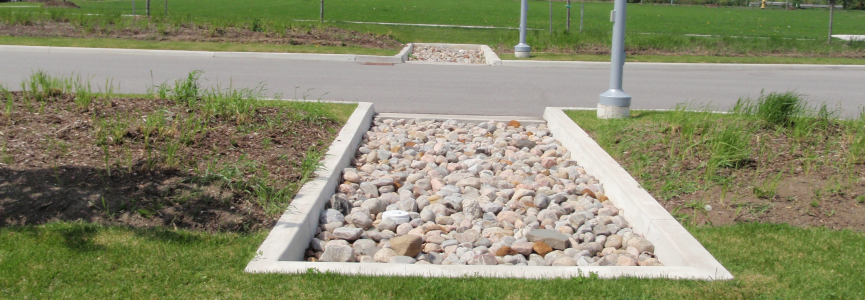Low Impact Development
For over a decade now, the management of urban stormwater runoff in Ontario has been seeing a significant shift towards decentralized practices that help maintain and restore the natural water balance. These practices, known as Low Impact Development (LID), mimic the natural water balance by focusing on practices that promote increased evapotranspiration, infiltration and groundwater recharge, and lower surface runoff volumes and flow rates. Maintaining the natural or pre-development hydrology of a site is critical to the ecological functioning of natural features, such as wetlands, woodlands, and watercourses. Hence, an LID approach to stormwater management includes consideration of water balance criteria for the protection of natural features.
LID practices are those applied to minimize runoff at source, where rain falls. Examples include increased pervious cover, disconnection of impervious areas from the storm sewer system, cisterns for collection of roof runoff, grassed swales, green roofs, and bioretention areas. Existing stormwater management models have been adapted to incorporate more of these practices in order to promote widespread adoption of the water balance approach by engineers, planners and other practitioners in the development industry.
Select an LID practice on the right side bar or from the slider below for more information on STEP’s work in this area.









